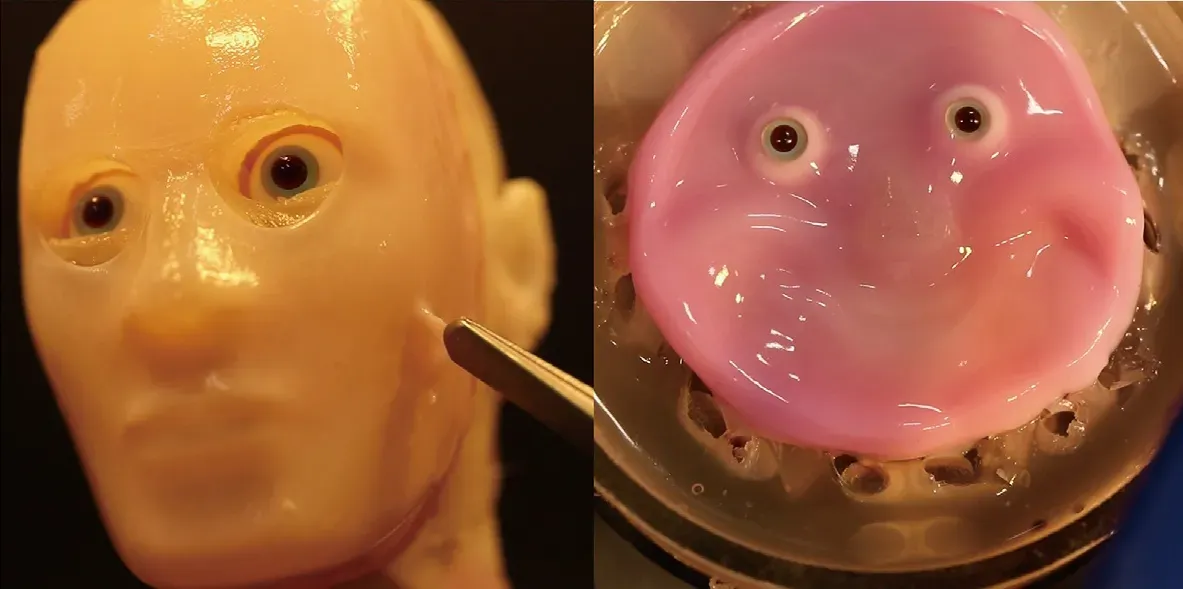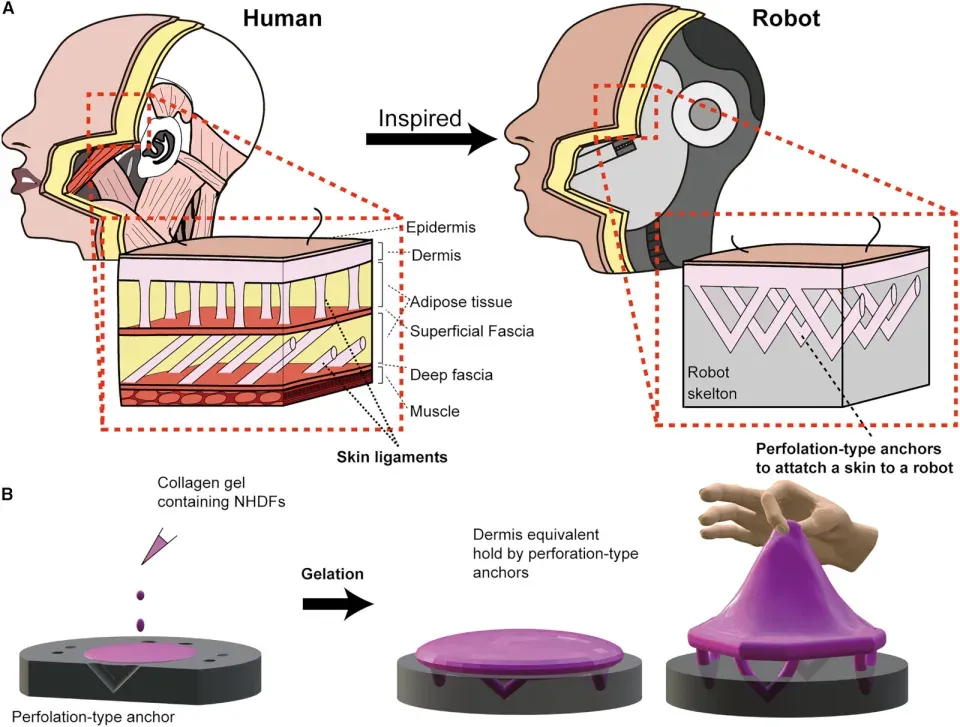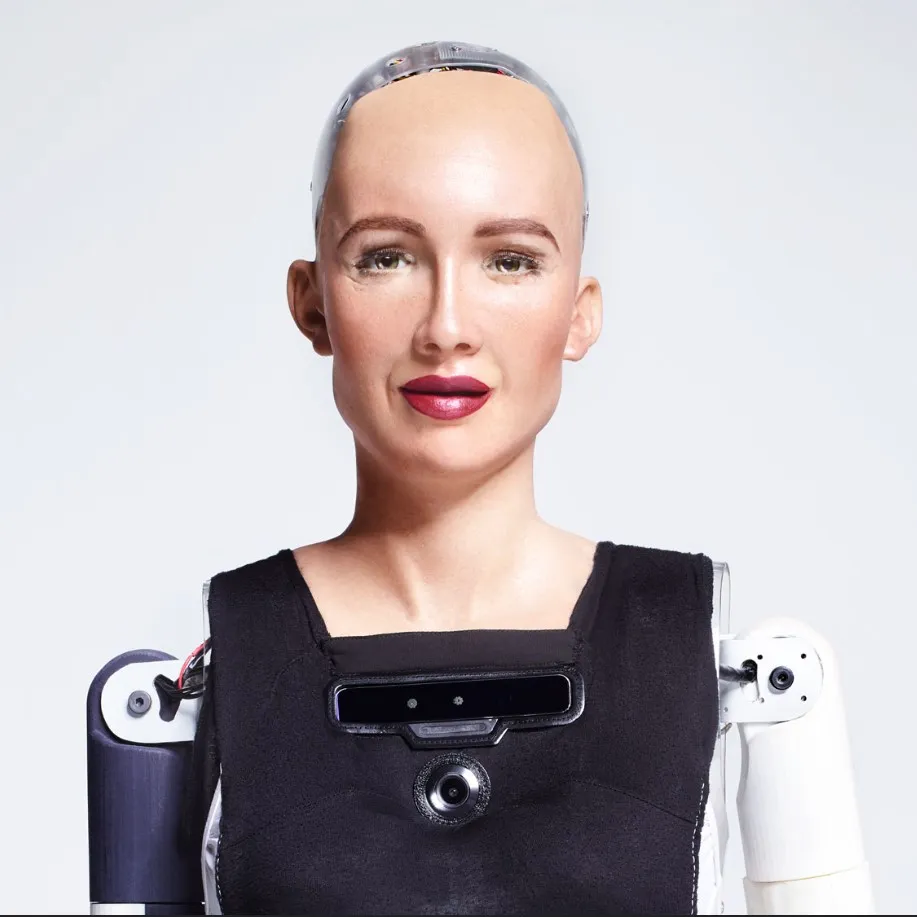The idea of robots having skin has been around for ages but is, of course, only seen in movies. These days, however, we see it as a real thing. Now these robots may even be given living skin, but there's a slight issue and yet a possible solution to it.
Humanoid robots—robots with the human form factor—have advanced over the years, especially in the last few months. They can even speak like humans and sound just like us. With how they are being developed rapidly, they may very well have skin that looks, feels, and perhaps heals like ours. And a group of scientists from the University of Tokyo and Havard University have started making headway.

Image credit: University of Tokyo
Okay. It does look pretty creepy. Very uncanny, and definitely not something I'd like to see around me interacting with a humanoid robot wearing one. Yet, admittably, it's a step. But the problem lies in keeping it fixed in a way that it wouldn't slip or slide around the robot's skeleton—just like the way our skins are firmly joined with the muscles and tissues.
The idea is to use "perforation-type anchors," which are going to act like skin ligaments. And ligamets are what keep our skin attached to our muscle and tissue, so it stays firm.

To demonstrate the method's effectiveness in attaching synthetic skin to a "3D objects with intricate contours," the researchers molded fabricated skin equivalent onto a fake head. TheVerge

When this "skin" really advances and robots begin to wear it, it could significantly improve the realism and comfort of human and robot interactions. The general idea is to make them more acceptable and less intimidating, especially in roles such as caregivers, companions, and the like.
They could even get the ability to mimic human facial expressions and gestures, which would make them more effective in their communication. We have seen such in Sophia, the humanoid robot by Hanson Robotics, but the difference here is that we're talking about an actual living skin—something that could heal.
The group of scientists also made a "robotic face covered with dermis equivalent, capable of expressing smiles." So when the robot tries to smile with the device under the skin on its face in a sliding motion, the skin moves alongside, creating a smiling impression.

Image credit: University of Tokyo
That smile is horrifying, to be honest, and I'd like to think that most people would see it that way. And even if it doesn't get way better in the future, there may be some societal resistance to the idea of having robots that closely resemble humans. How people perceive and accept it will play a crucial role in the integration of such a technology.
If you could own a humanoid robot, would you like it have a skin just like yours? How would that make you feel?

Make earnings with your content on Hive via InLeo while you truly own your account. If you're new, sign up in a few minutes by clicking here! And here's a guide on navigating.